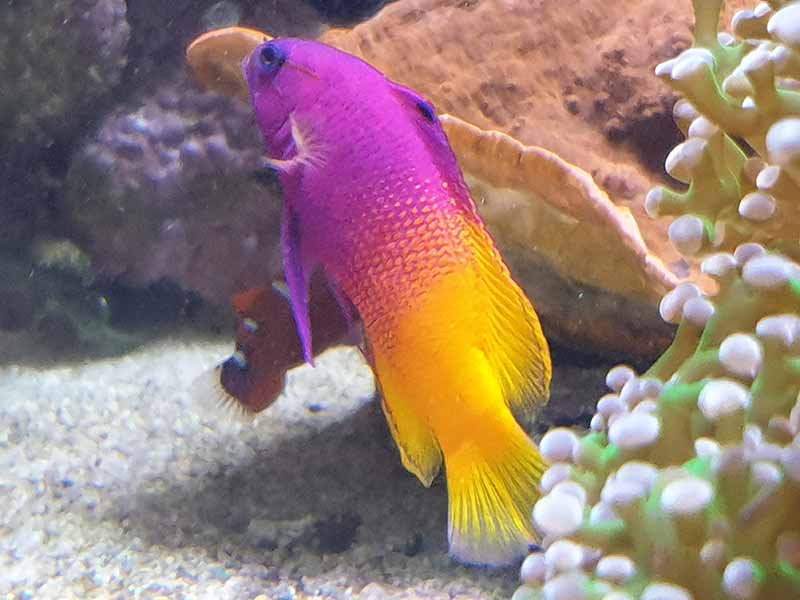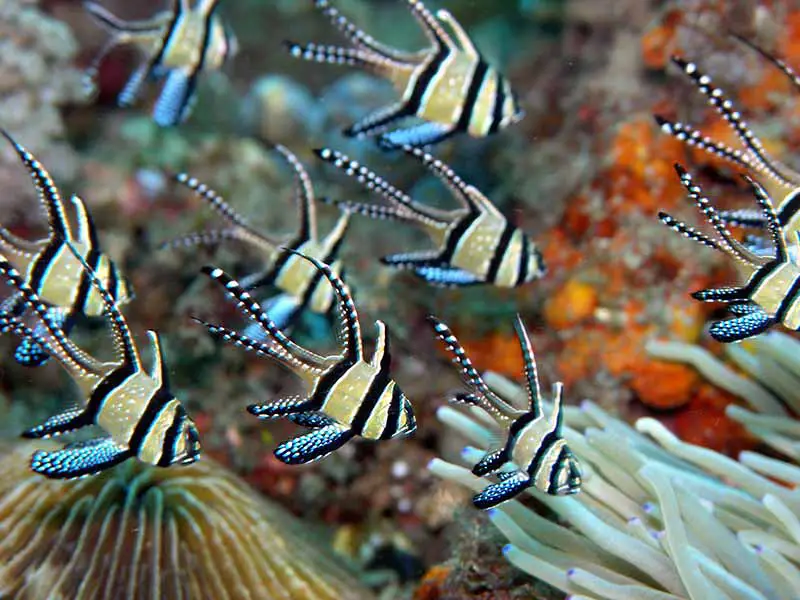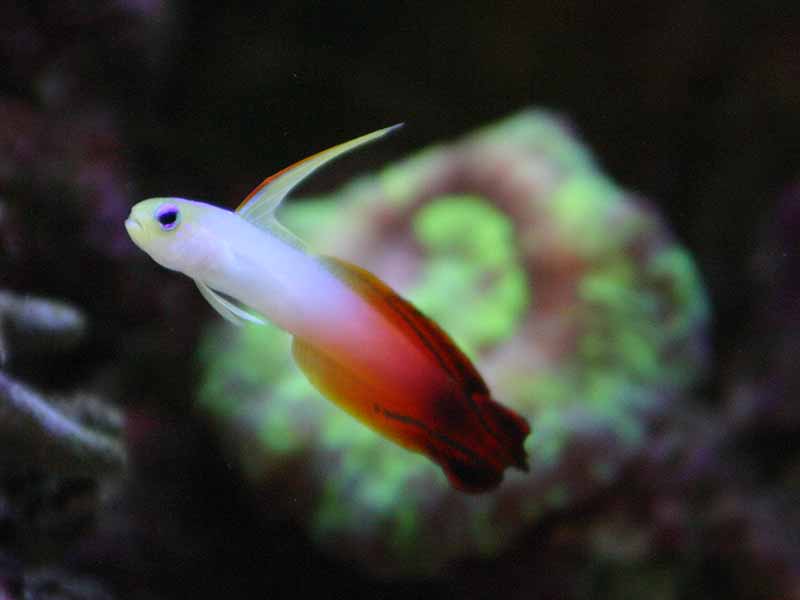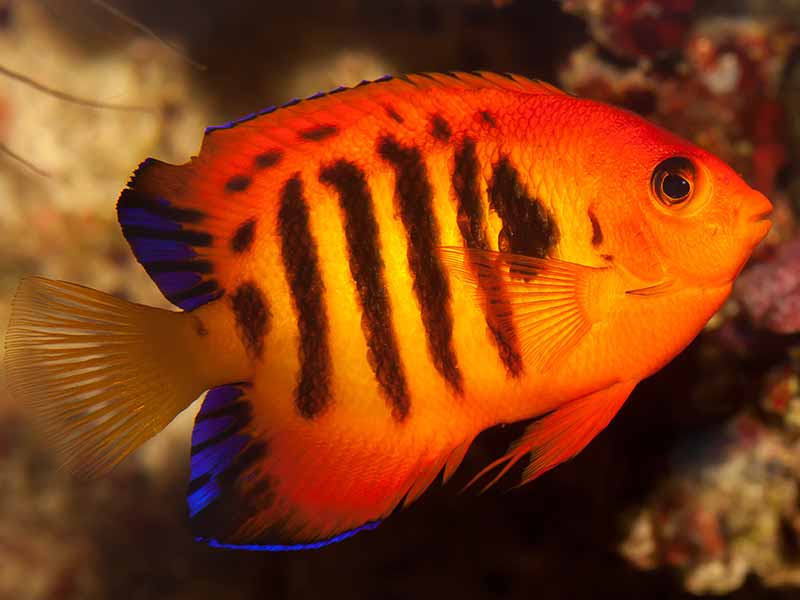You have finally started the process of learning the hobby but now you are wondering when you can start to introduce fish to your saltwater aquarium? Well, let’s hold on for just a moment. There are a few things to make sure that you have prepared before you start throwing saltwater fish in a tank.
Tools For Acclimating New Saltwater Fish To Your Tank
But Where do You Start?
You need to make sure that your tank has all the necessary equipment and live rock, as well as ensuring that the tank has been properly cycled before you try to add your new fish friends to their new homes.
You can find helpful guides and tips for this process like this one at Reef Tank Resource. The fish you add will have certain water parameters and other care needs that you need to take into consideration when you buy your equipment.
As I always say, planning and research are your best friends in this hobby. Never purchase without fully researching the product and the fish you are placing in your saltwater aquarium.
Inches of Fish per Gallon Rule
Generally, the rule of thumb most hobbyists are familiar with is for every 1 inch of fish per gallon of water. For example, that means is if you have 2 inches of fish you need 2 gallons of water.
However, this is just a guideline as there can be exceptions to this rule, so it is important to understand what can influence these exceptions. For instance, depending on the type of fish, where they will want to congregate might be the same.
If this is the case, having that many fish altogether and who will not be evenly spaced around the reef tank will cause a lot of unhappy creatures. They will be fighting over the same sand bed or rock structure.
A decent understanding of your fish’s preferred space in the environment is needed if you are trying to stick to this old rule. Really, the rule works best if the fish swam in place the entire time, but we aren’t building dioramas we are curating saltwater aquariums.
You want to keep in mind that the inches of fish per gallon rule is not the end all be all.
Understanding the Care for Your Fish is More Important
Overall, it is more important to understand how many you can add at once and the care needs of each of your marine life.
If you are familiar with the needs of your fish, you can properly plan for their introduction and guarantee that they will have the space they need in the area of the aquarium that they prefer.
What this means is looking at your tank as spaces to be used for living. In a sense, pretend imaginary property lines are running around your aquarium that your fish will inspect when they arrive in your reef tank.
You may want to ensure the rocks are available for fish or that the bed of the aquarium is suitable for any burrowers you may want to introduce.
These are common spaces for fish to mark as their own.
Think of it as real estate
By looking at the aquarium as having spaces to be rented out, you can more efficiently use all the space in your aquarium and have the most fish that you safely can. To do this properly, you need to understand if the fish will stay in that spot.
Remember though, not all species stick to the same property lines. Some are roamers and you should know that so you can make sure they have plenty of space to do their thing without encroaching too much on the other species in your aquarium.
Watch Out for Potential Infighting
Some species are more combative than others, so you also need to consider what species just don’t work well with specific other species. They may say the fish is for a beginner but that doesn’t mean that the fish doesn’t have a rival fish that just won’t work in the same tank as them over time.
For example, Clownfish is a common staple of saltwater tanks, but your Clownfish have Damselfish as neighbors there might be some fights breaking out. Knowing the compatibility of different marine species will help to avoid any potential infighting. You want to ensure that your smaller fish have hiding places.
Introduce Fish Slowly
You might think, if your budget allows, that you can add your entire tank’s fish community at once. If you add too many fish at one time, you run the risk of disrupting the nitrogen cycle and could end up killing your brand-new saltwater fish. You need to take it slow to help your tank get used to the new inhabitants as much as the new inhabitants need to get used to the tank.
Everything in a saltwater tank is connected and introducing too much at once can throw off the delicate balance in the water quality without allowing filtration the time to remedy it.
How quickly can you add fish?
A good rule of thumb to live by would be introducing no more than 3 fish per nitrogen cycle. Essentially, you can add about 3 fish at a time and then wait until your tank has cycled and then add another 3 fish. Keep to this rotation to help better protect your saltwater fish as they acclimate to your reef tank. This way you avoid introducing too many fish at one time.
Finding the Right Saltwater Fish for You
You want to know which size tank would be best for your fish friends. While it is always prudent to go and research any fish that you might be interested in introducing to your tank, some fish make good starting points for certain tank sizes. You want to keep in mind the other creatures in your tank and whether any other them might have conflicting care needs. You need to keep in mind as well the behavior of your fish and what the size of the tank might mean for your fish and their territory.
Here is a list of fish that could work well, their respective tank sizes, and some characteristics to be mindful of as you begin to plan out your saltwater tank.
Fish that work well in a 30-gallon aquarium
A 30-gallon tank is not a super large tank so you want to be careful how many different varieties of fish you might want to add to the saltwater aquarium. Here is a list of fish and their characteristics to set you on the right path in making your decision.
Clownfish
One of the most famous fish species in the world, the Clownfish can make for an easy saltwater fish to care for. Now-a-days the fish you find available for sale are usually born and raised in an aquarium so they will acclimate to aquarium life much easier than their wild-caught cousins.

Royal Gramma
Famously known as Gurgle from Finding Nemo, these small fish are relatively easy to care and peaceful toward other tank mates. They are territorial toward other Royal Gramma so they shouldn’t be kept in pairs or schools.

Bangaii Cardinal
Bangaii Cardinal fish are quite small and like to school. They don’t require to be kept in groups but if your tank is larger it is preferred. 3 are a good number for a 30 gallon aquarium.

Firefish Goby
The Firefish Goby is an adaptable fish and are able to withstand a larger range of water quality than other saltwater fish. You should keep these little guys in at least pairs or a bigger school. Don’t worry though, they are not aggressive fish and should get along with the other fish in your reef aquarium fairly well.

Dwarf Flame Angelfish
These vibrant fish would make a great inclusion to your aquarium. However, keeping multiple of these or their Flame Angelfish cousins means keeping a slightly larger aquarium. Always check to see how much your fish can grow. These guys can reach up to 4 inches.

Quick Reminder
Of course, the fish listed above can acclimate to larger tanks. However, you want to ensure that the larger species you might be introducing in your larger aquarium size do not conflict with the care needs of these smaller more peaceful fish. The biggest difference is that you can add some larger fish and invertebrates.
Working with a Larger Tank Size
Okay, so you are looking into getting a slightly larger aquarium size, so what fish will acclimate best to a 60-gallon saltwater tank, maybe even a 125-gallon tank? Another good rule of thumb is if the fish are smaller than the mouths of larger fish there might be an issue.
Try to stick to fish that are generally the same size and remember that the temperament of your tank’s inhabitants is just as important to consider as the space they need to thrive. Of course, there are species that grow larger like the Flame Angelfish that will do best with a larger gallon aquarium.
Conclusion
The biggest part of taking care of a saltwater aquarium is making sure you are doing the proper research for your equipment and tank inhabitants. You want to ensure that you are giving your fish the space and the care that they need to thrive. When in doubt follow the inches of fish per gallon rule but you always want to look at the details of any fish you are trying to introduce to your tank. Keep in mind their behavior, size projections, and required water parameters to guarantee that they will live a long, safe, and happy life in your saltwater aquarium.



